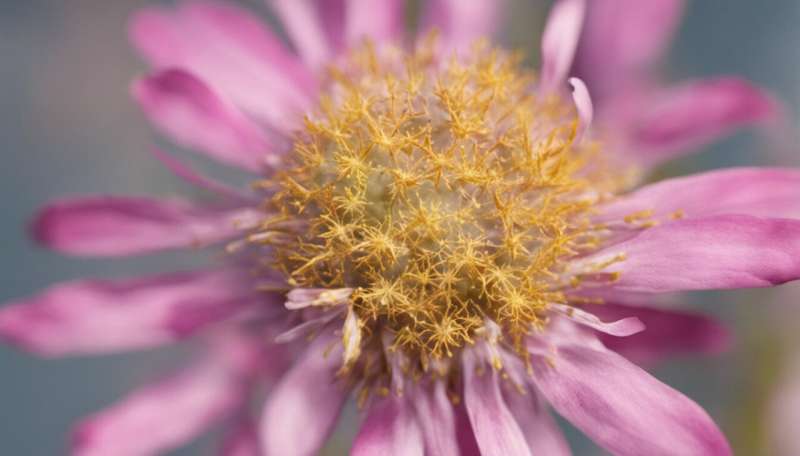Six things to know about cancer: From suicidal cells to hair loss from chemotherapy

News of the discovery of herbal cancer treatments has always piqued people's interest. Recently, the media in Indonesia extensively reported claims of a cancer cure made from a plant native to Borneo and the use of soursop leaves as a form of alternative treatment.
This is not surprising as cancer kills over 200,000 people per year in Indonesia. Treatment costs are high, while survival chances remain slim.
Although certain plants can be used to make drugs, the ingredients have to pass a series of rigorous screenings and studies. After it's declared safe and its health benefits scientifically proven, only then can the drug be mass produced and marketed commercially.
To understand this further, this article explains the biological process behind cancer, a disease triggered mostly by lifestyle choices and made worse by unhealthy environments.
1. Trillions of cells multiply inside our bodies
Cancer is what happens when cells divide in an excessive and uncontrollable manner.
Cells are the smallest parts of our body. At least 37 trillion individual cells live inside us.
Each cell is a "body" of its own. Cells can generate energy, regulate their own "homes," expel waste, defend themselves, multiply and "commit suicide" when they're injured or grow old.
Shortly after fertilization, cells can grow to become a number of possible organs. They can develop into skin cells, nerve cells, muscle cells, bone cells or other body parts.
After being "assigned" to become a specific kind of cell, it will develop the capacity to have memories. The cell will then grow and multiply, generating identical cells with the same task. Complex instructions from our brains are sent so that these cells grow at a normal rate and work according to their assigned jobs.
For instance, the cells that are assigned to become blood cells will multiply into more blood cells. They multiply and grow no more than they need to.
Since the only role of red blood cells is to transport oxygen around our body, they encounter only minor challenges and thus their damage can be predicted. These cells will die after 3-4 months. Red blood cells multiply at the rate needed to continually replace these dying cells.
White blood cells, on the other hand, have an important role in defending our body from foreign threats. When there are no "enemies" such as bacteria or viruses, then these white blood cells multiply slowly. Once enemies appear, their production speeds up as they must eliminate them as soon as possible.
2. Cell suicide happens regularly
Once in a while, cell divisions can encounter problems and disrupt the "supply and demand" of our bodily functions. During situations like this, cells can detect anomalies. These abnormal cells have to be disposed of, so the suicide of these cells stops the abnormal growth.
These problems occur rather often inside our bodies, but we never realize it as our body is programmed to deal automatically with these problems.
However, at times, this "regulatory suicide" process can fail to do its job. The defective cells then remain undetected and left to grow. They continue to multiply uncontrolled, and this is what we call cancer.
3. They look like crabs and can 'walk around'
At first, the number of defective cells is only limited.
In breast cancer cases, at first when the area is touched there would seem to be no irregularities. But, after a while, the cell grows into a clump as big as a seed, and then as large as a marble. Eventually, the cells will multiply so much that it becomes the size of an egg. (That's why women are advised to regularly self-examine their breasts so these cases can be detected much earlier.)
When the clumps of defective cells are only as large as seeds, these clumps still remain idle and hang around other healthy cells.
However, because these cells are abnormal, they ignore their growth limitations and instead multiply at an uncontrolled rate. Our body will interpret these abnormal growths as sites requiring extra food, and networks of "toll roads" are created in the form of blood vessels to deliver nutrients straight to these cells.
After receiving fresh supplies of oxygen and nutrients, these defective cells multiply even faster, and can no longer sit close to normal cells as the clump needs more and more space to grow. With a network of blood vessels meeting their "nutritional needs", the defective cells then grow tentacles reaching out in every direction.
Picture a crab monster with many claws and feet. Due to this form, those cells are referred to as cancer cells. Cancer is the Latin word for crab.
During the next phase, the defective cells keep multiplying and other cells in their paths (such as our skin) are exterminated. These cancer cells grow, while the skin cells give up. This results in wounds caused by attacks from the cancer cells.
Sometimes, some of these defective cells detach from the rest of the group and circulate in our bloodstream or through lymphatic vessels. These cells can end up in our lungs, bones, brain, liver or other organs. They settle down and continue to grow, pushing away normal cells.
4. Understanding cancer stages
We often hear cancer mentioned in terms of its stage. It's called stage 1 cancer if the defective cells are relatively small and can still hang around healthy cells.
When the cells start to grow larger, doctors usually refer to this as stage 2 cancer.
If the defective cells then start to spread and aggressively push away healthy cells, it becomes stage 3 cancer.

Stage 4 cancer is when those defective cells spread to other locations, such as when breast cancer cells spread and grow in our lungs or bones.
5. The causes of cancer
Many things contribute to the growth of cancer cells, including toxic substances in cigarettes, sunlight, substances used in food preservation, artificial flavors and food dyes, repetitive injury, virus infections, dangerous chemicals and many more.
In essence, those incidents disrupt our cells one way or another, and our bodies try to heal the damage. But because the damage is dealt over and over again, the regenerative process has to keep up even faster, to the point that it might lose its ability to detect damaged or defective cells.
Poisonous compounds within cigarette smoke, for example, damage lung cells over time. At first these damaged cells will regenerate. But, because the toxins keep getting reintroduced into the body, at one point it will fail to detect damage to the lung cells. This is the start of cancer cell growth.
This cycle repeats over a long time, often years. That's why it takes years for smoking or consumption of other toxic substances to cause cancer.
Consuming preserved snacks for only a couple of days won't lead to cancer, but if consumed repeatedly and in excessive amounts for years and years, the risk of cancer increases.
Cancer can also happen to children, although the process is a little different than in adults. In children, cancer cells usually derive from genetic disorders that render their cells less likely to detect defective cells.
6. Cures, and what it does to our hair
Cancer treatment usually aims to eradicate the defective cells. When these cells are relatively small and isolated, they can be removed through surgery. Chemotherapy is sometimes then used to ensure the tiny cells that are left behind are destroyed completely.
If the cancer cell growth is large, radiation is usually a preferred method. It aims to kill the cells developing in surrounding areas. Once the size of the cancerous clump has been reduced, doctors can then proceed to perform surgery and chemotherapy.
However, if the cancer cells have spread to too many areas, the chances of successful treatment become very slim. At this stage doctors usually give up and do their best to help patients live the rest of their lives the best they can.
Because cancer cells are "rebellious cells" that escape the aforementioned "regulatory suicide" process, whatever drugs kill them will usually also kill other healthy cells. This is what happens during chemotherapy. Normal cells are also destroyed, including hair follicles. It's why we often see in movies patients go bald after chemo procedures.
To reduce the casualties among normal cells, experts have crafted chemo drugs that target only certain cells. The latest chemo drugs make us feel less nauseous and reduce the damage to our hair follicles.
This is why if you hear about wonder drugs or ingredients that are claimed to be effective in curing all types of cancer, you should be skeptical, and also remain cautious about their equally dangerous side effects.
However, if there's someone out there who claims to have discovered an anti-cancer drug that can perhaps prevent all types of cancer, then it's a bit more believable. The way it might work is by strengthening our immune system, upgrading its ability to detect and destroy defective cells, before it can grow into the crab monster we all pray we never have to face.
This article is republished from The Conversation under a Creative Commons license. Read the original article.![]()




















